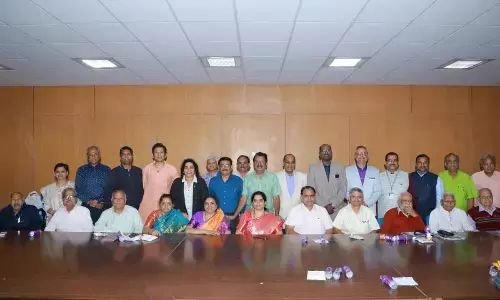Infiltration from Myanmar, militancy among issues behind unrest in Manipur
Share :

Infiltration from Myanmar, militancy among issues behind unrest in Manipur
Infiltration from Myanmar, illegal poppy cultivation, drugs menace, militant outfits' backing to certain tribal communities, differences in perception between the people living in valleys and mountainous areas besides complex demographic pattern are the offshoots of the prevailing unrest-like situation in Manipur.
Imphal: Infiltration from Myanmar, illegal poppy cultivation, drugs menace, militant outfits' backing to certain tribal communities, differences in perception between the people living in valleys and mountainous areas besides complex demographic pattern are the offshoots of the prevailing unrest-like situation in Manipur.
The northeastern region, which presents a complex linguistic mosaic and has "jealously" preserved over 200 dialects, is home to 45.58 million people (according to the 2011 Census).
The indigenous tribes constitute around 28 per cent of the population and they mostly speak in their native language or their indigenous language.
Besides, a large number of non-tribals belonging to Hindu, Muslim and Christian communities, a reasonable portion of indigenous and Hindi-speaking people live in the region with different life-styles, cultures, traditions and languages.
The region, comprising 8 states, has some peculiar characteristics which are different from other regions of the country.
In Manipur, there are 35 different communities with different lifestyles, cultures, traditions, language and food habits.
While the Meitei community mostly lives in the valleys and the tribals - the Nagas and Kukis, who are mainly Christians - constitute about 40 per cent of the state's around three million population and inhabit the hill districts which account for much of the state's land.
Tribals have been enjoying the Scheduled Tribe (ST) category status for decades since India's Independence and they have always strongly opposed allowing others ST category status.
The prevailing situation in Manipur turned seriously volatile as thousands of tribals on May 3 turned up in the rallies called by the All Tribal Students Union of Manipur (ATSUM) in all the 10 hill districts to oppose the demand for inclusion of the Meitei community in the ST category.
The Meitei community -- mostly Hindu, which dominate the non-tribal population in Manipur, have been demanding ST status for decades, alleging infiltration from Myanmar and Bangladesh, destroying the demographic pattern.
Notably, the fertile and resourceful valley areas make up around one tenth of the total land mass of Manipur, while the surrounding mountainous areas, known for militants' hide-outs and home to decades-old insurgency, account for 90 per cent of the state's lands.
The government in Manipur, irrespective of which party comes to power in the state, has always been dominated by non-tribal Meiteis, who account for about 53 per cent of the state's population.
In the current 60-member Manipur assembly, there are 10 MLAs, including BJP's five legislators belonging to Kuki tribes, while the Kuki People's Alliance (KPA), which is an ally of the ruling BJP, has two MLAs.
The Naga People's Front with five legislators is also the partner of the BJP-led government.
Around 4.50 lakh people, belonging to Meitei communities, also live in Assam, Tripura, Meghalaya, Nagaland and other states in India.
Following the April 3 rally, clashes, attacks, counter-attacks among different communities and burning of houses and shops took place in different districts, forcing authorities to suspend mobile Internet services for five days, while a night curfew was also imposed in several tension-ridden mountainous districts, including Imphal West, Bishnupur, Jiribam, Tenugopal, and Churachandpur.
The state government on April 3 night requisitioned the Army and Assam Rifles to control the ethnic violence in at least six districts.
Earlier, tribals protested against the state government's action to evict them from forest lands and destruction of illegal poppy cultivation in the reserve and protected forests and organised protest rallies on March 10 in three districts -- Churachandpur, Kangpokpi and Tengnoupal, during which five people were injured.
Incidents of violence, including arson and vandalisation of government properties, were triggered on April 27 in Churachandpur district after the tribals launched fresh protests against the state government's action against illegal poppy cultivation.
Manipur Chief Minister N. Biren Singh cancelled his April 28 visit to Churachandpur district, where prohibitory orders have been clamped and mobile internet services suspended following the April violence in which "miscreants" set afire the venue, burnt chairs and damaged other materials.


















